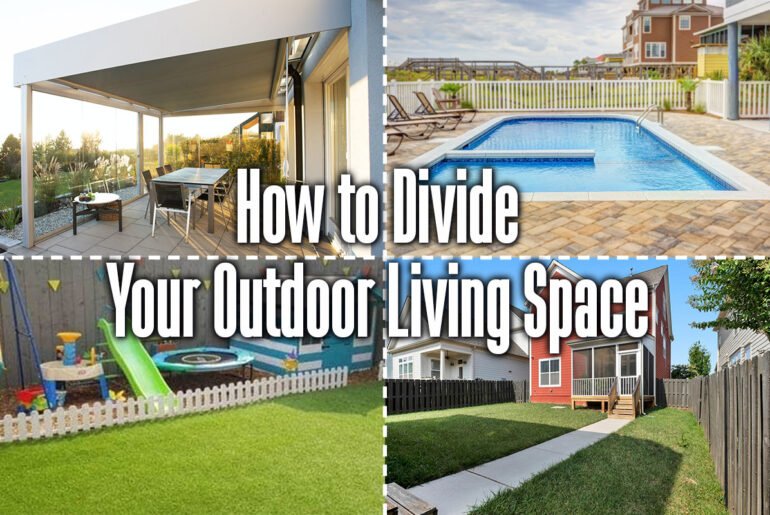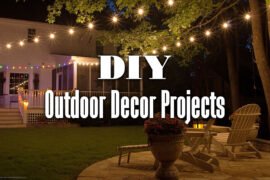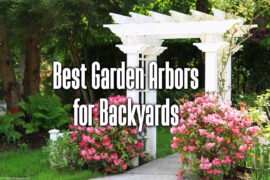We have come up with a few ideas for how to use extra space in your yard to divide your Outdoor Living Space.
Why do you spend your time indoors when you can expand the usable portion of your home by dividing your outdoor living space? It is not difficult to construct “rooms” in the backyard, but it does require a knowledge of the divide and conquer method.
The idea of having comparable outside living spaces may provide the same pleasure as the concept to divide your Outdoor Living Space in our homes. The majority of people’s biggest obstacle is that they do not consider dividing up a yard to enhance their enjoyment of it. At some point, we became aware of it. However, the more aware we are of outside living spaces, the better prepared we can make them meet our demands.
Design Considerations
The beauty of the idea of distinct rooms in a home is that each one is distinct from the rest. To summarize, you may install a component in the kitchen that looks fantastic there without worrying about whether or not it would look strange if viewed from the bedroom. The same applies to outdoor living areas.
Having multiple outside living areas allows you to create tiny landscape designs (each somewhat distinctive from the rest) for each of them. It’s not that you shouldn’t try to maintain harmony in your landscaping design as a whole. However, the more effectively you can Divide Your Outdoor Living Space from another, the more options you have to diversify without forming a jumble.
You may, for example, want to include a towel storage container in the pool area. This would be an effective component and look fantastic in the space. However, you may not want to view it from a separate yard section set aside for meditation in naturalistic settings. The solution: Build a tall hedge or fence around the pool area to create a distinct space away from the rest of the yard.
Setting the Mood With Color
You may make distinctive statements for each of your outdoor living spaces by using color in the same way you would decorate or wallpaper an inside area with a color scheme that is unique to that space. Instead of paint or wallpaper, you choose the plants you’ll employ for the space when you pick your color scheme here.
Color theory may also have an impact on mood and perception in landscape design. For example, the hues you pick for a calm nook to meditate on would differ from those chosen for play areas. You can also make little areas appear larger (or vice versa) depending on your selected colors.
The Building Blocks
Consider the structural elements of outdoor living areas in terms of their equivalents in indoor rooms: floor, walls, and ceiling. The word structural is sometimes employed metaphorically for outdoor living areas. This means you’ll have far less to worry about. Removing out a “wall” because you don’t like your original choice won’t bring the ceiling crashing down on your head!
Consider the materials needed to construct an outdoor living space’s floor, wall, or ceiling as the building blocks. Here are some instances:
For floors:
- Decks
- Mulch
- Patios
- An alternative ground cover, such as clover
- Grass
For walls:
- Fences
- Formal Hedges
- Informal Hedges
- Lattice Screens
For ceilings:
- Awnings
- Arbors and Pergolas
- Decorative canvas canopies
- Lawn umbrellas
- The canopies of shade trees
You have a lot of space to maneuver when it comes to these building blocks. For example, the building blocks of a wall (hedges, fences, and so on) are replaceable parts that may be matched and mixed to meet your requirements, budget, and personality. Hedges may serve as two of your four walls, with the other two fenced. If comprehensive screening isn’t required, you may create more attractive or useful exterior living rooms by adding lower vertical features such as raised beds, container gardens, and furniture.
A ceiling is optional for many outside living areas, although it does provide an extra sense of enclosure. Ceilings are only required in locations where staying dry and cool is critical.
By default, all planned outside living areas already have flooring. The key question is whether the existing floor satisfies your needs adequately. For example, maintenance is almost always a factor to consider, and you may conclude that a grassy area you’ve been walking on for years isn’t worth the effort (mowing).
To discover the building blocks required to construct outdoor rooms, all you have to do is look at their intended purpose. When you’re creating such areas, keep both appearance and functionality in mind. But if you’re in a location dedicated to physical activity, pick functionality first. Safety should never be compromised. When you add something to your freshly created area, you can alter it later if need be.
Outdoor Room Examples
Pool Areas
Let’s start with outdoor rooms that are primarily used to house a swimming pool. Landscaping around swimming pools has several difficulties, including safety, upkeep, and privacy. You don’t want anyone to fall or get injured on anything, you don’t want to spend all your time cleaning up garbage, and you don’t want the neighbors staring. When it comes to picking a wall to enclose the area (which may be required depending on your area’s regulations and rules), all of these variables are considered.
If a fence is built around a pool, it might be argued that it serves as the wall rather than a hedge or lattice screen. The most effective fence for screening out prying eyes is one that is tightly built. There’s nothing to trip over and nothing to clean up because it doesn’t have any leaves or needles to drop.
Pool floors must be slip-resistant. Ceilings aren’t usually necessary: You’ll get wet no matter what, and sunbathing and swimming are linked.
Meditation Areas
Some of the issues surrounding meditation gardens are similar, while others are quite different. Privacy is still a problem (since secluded settings are more restful than open settings), as is upkeep. But safety takes a back seat. Instead of physical activity, reflection takes center stage here. Furthermore, aesthetics have greater importance.
Most individuals find plants to be more soothing than hardscaping, so they use hedges to create the boundaries of such outside rooms. Rather than waiting for hedges to grow tall enough to provide seclusion, Lattice screens are an easy alternative. Train vines to climb up the lattice to meet your need for plants while also giving additional seclusion. Climbing hydrangeas are perennial vines that look fantastic in shady locations. There are many more choices in the sun these days, including the morning glory’s ever-popular yearly.
Consider a mix of natural materials for the floor. You want something attractive to look at with multiple textures: Consider a rough flagstone patio with scotch moss planted in the gaps between the stones—or creeping thyme if you like fragrant plants.
In meditation gardens, a ceiling may be quite useful. You must now select between appearance and function. A vine-covered arbor may be more alluring to look up at than a lawn umbrella, but the latter will protect you—and the books you might be reading—from the wet. If you’d want something more substantial than an umbrella, consider building a pergola with fiberglass on top.
However, water should not be prohibited from all contemplative outdoor rooms. There’s no denying that any location in our yards where accessories such as garden fountains and waterfalls may be used is here. There is no substitute for the soothing sound of trickling water to help us relax and reflect.
Because of their unique function, meditation gardens, in particular, demand add-ons. Here, curiosities and yard art pieces might be used as focal points. As long as they can withstand the elements, you may include any objects with special meaning for you as extras.
Play Areas
Set aside a special outdoor area just for your children if they enjoy baseball, football, soccer, or simply running around. You can’t do much better than a grass floor for these activities. Ceilings are not required, but they must be present. You don’t want stray tosses rolling into the street or damaging those plants you just planted in another part of the yard. A solid fence will most likely be a wall in this situation, as it would easily stop a ball. Because of this, hedges are ineffective because balls may go through them or get trapped within them. Kids may damage a hedge if they have to pull out balls caught in it repeatedly.
Add-ons and Accessories
Patio furniture sets and similar items are utilized in various outdoor environments, especially those with eating features. The patio or deck is the ideal alfresco dining location for many individuals. In addition to outdoor kitchens, this is sometimes combined with patios and decks. Fortunately, there are a plethora of patio and deck accessories available to enhance your outdoor dining experience.
Why should you restrict your time in your outside spaces to the summer months? Accessories are also available for the Northern regions to extend your enjoyment of the garden throughout other seasons. Electric heaters, Outdoor fireplaces, and gas heaters are all useful technologies that will keep you warm throughout the fall and enable you to get back to your hobbies in early spring. Another excellent extender is outdoor lighting, which allows you to enjoy your outside spaces under the stars.




Comments are closed.